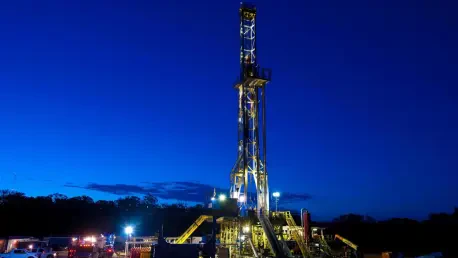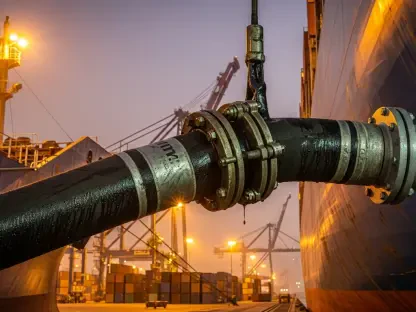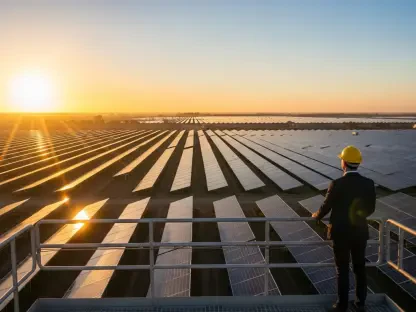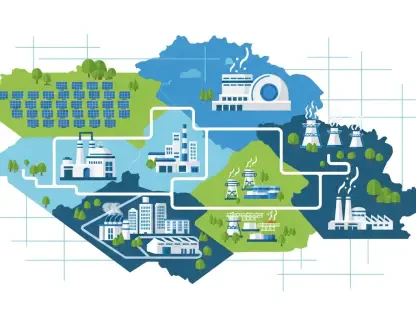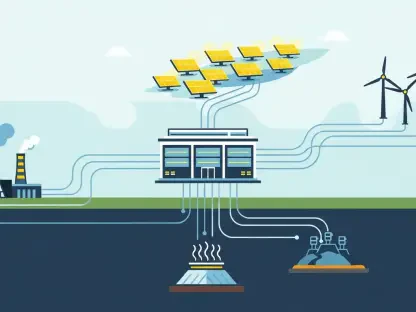Christopher Hailstone, renowned for his expertise in energy management and renewable energy, has significant insights into the ever-evolving dynamics of oil and gas markets. As our Utilities expert, he brings a nuanced understanding of the industry’s challenges, including grid reliability and security. In this interview, Christopher elaborates on the recent trends affecting U.S. drillers, including reductions in rig counts and the strategic considerations shaping energy companies’ decisions.
Can you explain why U.S. drillers have reduced the number of oil and gas rigs for the 10th consecutive week?
The prolonged reduction in rig numbers primarily reflects a strategic shift. Energy firms have been under pressure to enhance shareholder value, so they focus more on financial health over expansion. This means prioritizing debt reduction and shareholder returns, rather than solely boosting production.
What factors contributed to the rig count reaching its lowest point since October 2021?
Several intersecting factors have led to this significant drop. Beyond the financial strategies of firms, we’ve faced a sustained period of lower oil and gas prices, which have naturally encouraged companies to be more conservative in their operational expenditures, including rig deployments.
The Baker Hughes report indicates a decline in both oil and gas rigs. How significant is this decline compared to previous years?
The decline is quite significant. In recent years, we’ve seen a cumulative decrease, with rig counts down by about 20% just last year. This year has continued the trend, further underscoring the industry’s cautious approach amid fluctuating commodity prices.
How has the recent decline in U.S. oil and gas prices influenced energy firms’ strategies regarding rigs?
Energy companies have had to navigate this challenging pricing environment by reassessing their priorities. Lower prices reduce immediate revenue potentials, pushing firms to adopt more prudent fiscal strategies. This means consolidating operations and cutting back on new investments like drilling rigs.
What specific reasons are causing energy firms to prioritize boosting shareholder returns and paying down debt over increasing output?
Investors are increasingly calling for consistent returns, particularly in uncertain market conditions. Firms are responding by realigning their strategies to ensure financial resilience, which often means prioritizing debt reduction and returning more capital to shareholders instead of increasing production amid volatility.
Analysts have forecasted a decline in spot crude prices for a third consecutive year in 2025. How might this affect the industry’s future output?
While price declines often lead to reduced output, firms are preparing by optimizing existing resources and innovating cost-efficient production techniques. This could see output maintained or even slightly increased, despite lower prices, through enhanced operational efficiencies.
The U.S. Energy Information Administration projected an increase in crude output for 2025. What factors might contribute to this rise despite the decrease in rig count?
Key factors would include advancements in drilling technology and improved extraction methods. Companies are squeezing more productivity from existing rigs and wells, allowing them to boost output without proportionally increasing the number of active rigs.
Regarding natural gas, how is the projected 84% increase in spot gas prices in 2025 expected to impact drilling activity?
The projected price rise is likely to incentivize increased drilling activity. Higher prices mean potential for greater revenue, encouraging producers to expand their efforts to capitalize on stronger market conditions.
How did the 14% drop in gas prices in 2024 influence drilling and output decisions by energy firms?
That drop prompted many companies to scale back on production and investments as part of a broader strategy to preserve cash flow. By tightening operations, these firms sought to mitigate financial risk and remain agile in response to market shifts.
Can you discuss the expected trends in gas output for 2025 according to the EIA’s projections?
The EIA anticipates a rise in gas output, reaching 105.9 billion cubic feet per day. This increase can be attributed to anticipated improvements in gas prices leading to heightened drilling activities, as well as enhancements in drilling efficiency.
How did the demand for fuel during the COVID-19 pandemic compare to the current situation, and what impacts has this had on drilling activities?
During the pandemic, demand plummeted owing to widespread lockdowns. This led to a sharp reduction in drilling activities as firms adjusted to the sudden market contraction. Today, while demand has rebounded, the legacy of cautious optimization and financial conservatism remains.
What can you tell us about the geographical distribution of the drilling rigs, specifically in regions like the Permian Basin?
The Permian Basin continues to be a focal point due to its rich oil and gas reserves. Though there’s been a reduction in overall rig numbers, the strategic importance of this region ensures it remains a key player in national production targets.
Do you have any advice for our readers?
For those investing in or working with the energy sector, it’s crucial to stay informed on market trends and technological advances. Energy dynamics are shifting rapidly, and understanding the macroeconomic and technological landscapes can help navigate future opportunities and challenges.
